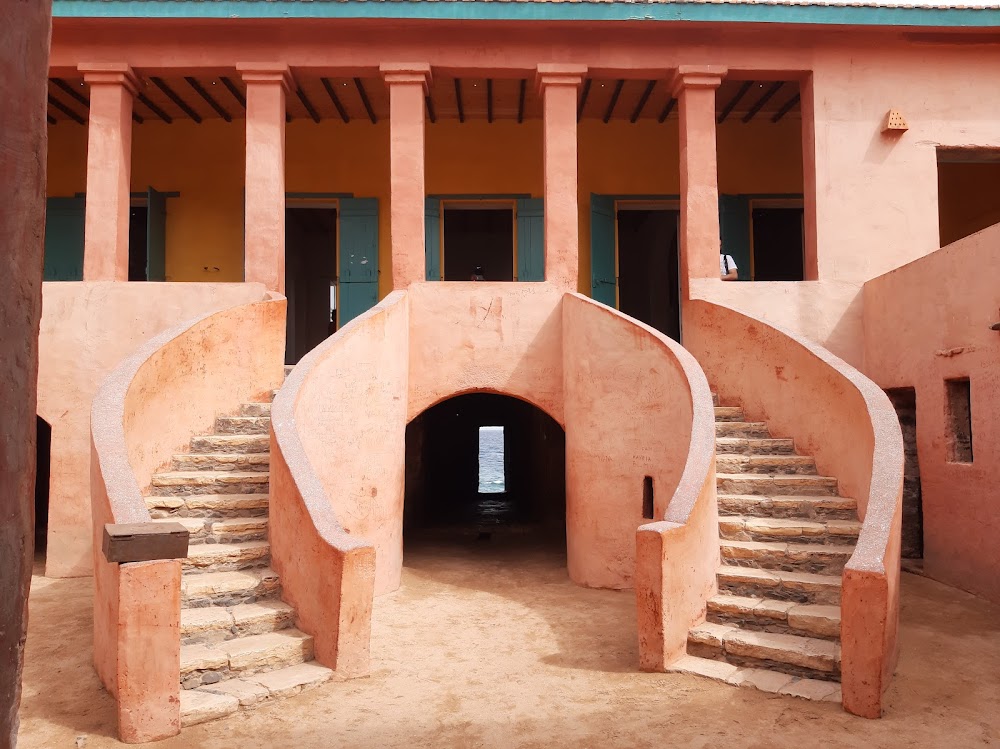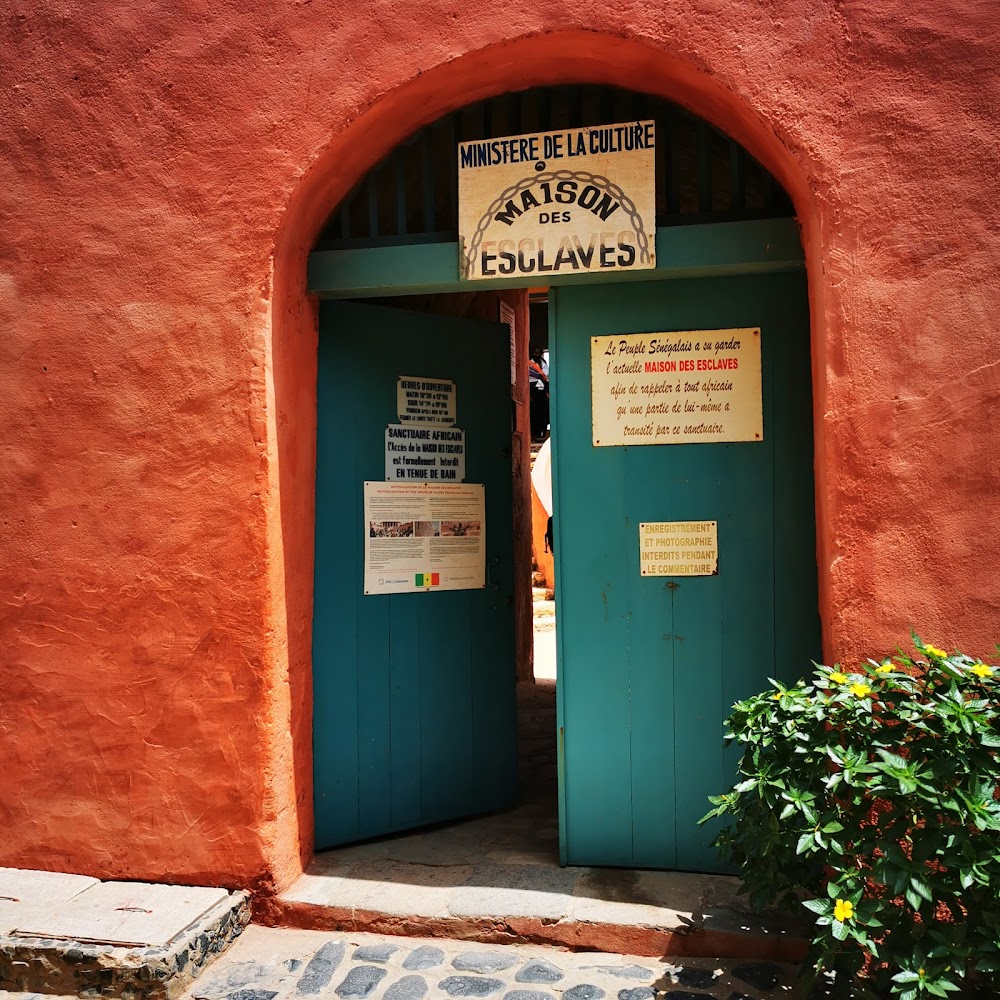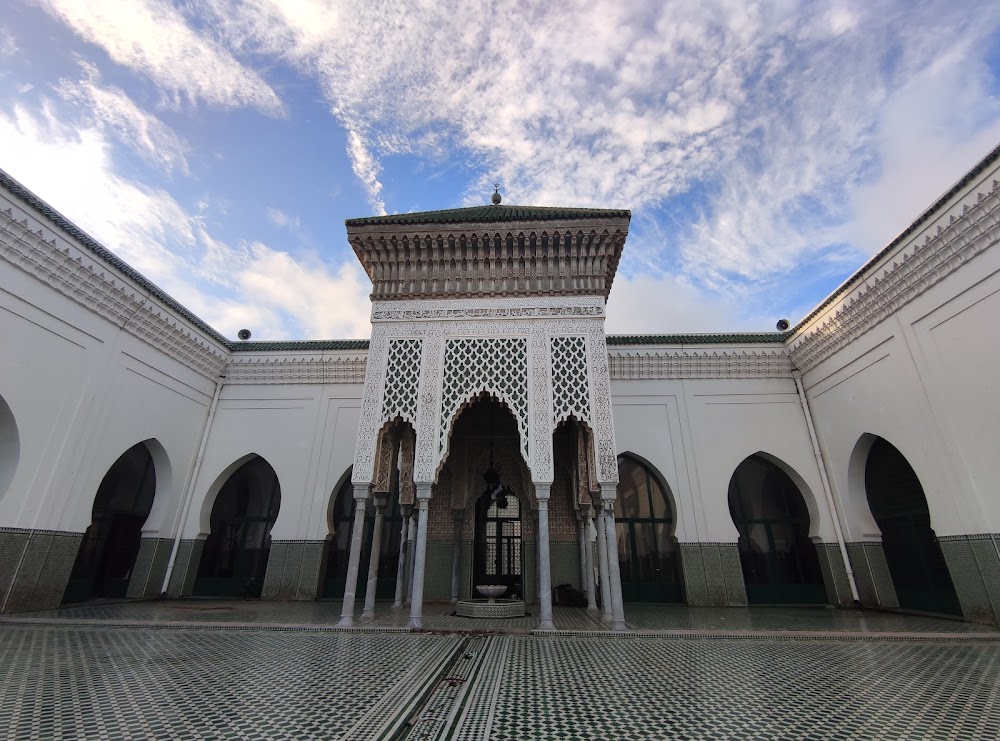House of Slaves (Maison des Esclaves)
Overview
The House of Slaves (Maison des Esclaves) is a poignant historical site located on Gorée Island, just off the coast of Dakar, Senegal. Constructed in 1776 by the French during the trans-Atlantic slave trade, this building reflects the island's strategic importance along the West African coast, serving as a critical point for the shipping and receiving of enslaved Africans.
The architecture of the House of Slaves is notable for its colonial style, featuring a modest yet striking design made of stone, with prominent arches and wooden doors. Visitors are greeted by a symmetrical façade that belies the harrowing history contained within. Inside, the atmosphere is dark and somber, with cramped cells on the ground floor designed to hold enslaved men, women, and children. These small, oppressive spaces had narrow windows or often no windows at all, allowing minimal light and ventilation, which contributed to the overcrowding and dire living conditions endured by those imprisoned there.
One of the most haunting elements of the House of Slaves is the "Door of No Return". This narrow doorway opens directly onto the Atlantic Ocean, symbolizing the final passage that countless enslaved individuals took as they left Africa for the last time. It represents a heartbreaking farewell to their homeland, as they were loaded onto ships bound for the Americas, forever changing their lives and the course of history.
As visitors ascend to the upper levels of the House of Slaves, they encounter rooms designated for European traders and the house's owners. The stark contrast between the torturous conditions endured downstairs and the relatively comfortable accommodations upstairs highlights the brutal inequalities of the time. The upper areas feature wider windows and better ventilation, serving as a cruel reminder of the indifference experienced by those living above the suffering below.
The House of Slaves remained operational until the abolition of slavery in the French colonies in 1848. After its closure, the building fell into disrepair until preservation efforts began in the mid-20th century, culminating in a significant restoration project in the 1960s. In recognition of its historical importance, both the House of Slaves and Gorée Island were designated as a UNESCO World Heritage Site in 1978, underscoring their roles as crucial educational and memorial sites.
Today, the House of Slaves serves as a museum, attracting visitors from around the globe who seek to understand the profound impact of the trans-Atlantic slave trade. The museum features informative exhibits, historical artifacts, and guided tours aimed at educating the public about the atrocities of slavery while commemorating the millions of lives it affected. The preserved cells, the Door of No Return, and other parts of the building stand as poignant reminders of this dark chapter in human history.
While debates continue regarding the precise number of individuals processed through Gorée Island and the House of Slaves during the slave trade, the site holds significant symbolic value. It stands as a memorial to all those who suffered and were impacted by the slave trade, ensuring that current and future generations can remember and learn from this painful past.







